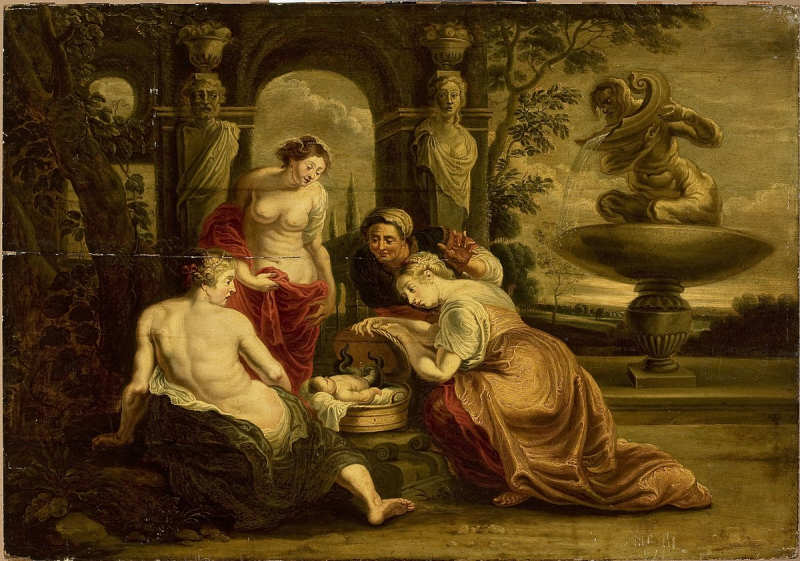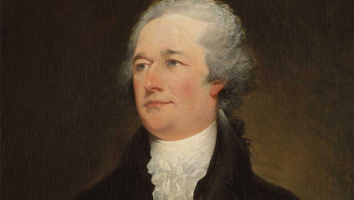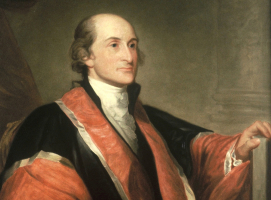Top 10 Incredible Facts about Athena
Ancient Greek goddess of learning, skill, and battle, Athena. She was one of the most well-known characters in Greek mythology and was revered as the guardian ... read more...of many Greek cities. Zeus is thought to have eaten his pregnant wife Metis before giving birth to Athena from his skull. Athena Parthenos, which means "virgin," was the name of one of the three Virgin Goddesses. In popular culture, Athena is frequently used as a symbol of women's empowerment, since she was revered for her strength and grace. Athena was one of the most revered gods in Ancient Greece, and a celebration known as Panathenaia was held in her honor. Here are some interesting facts about Athena that you can haven't heard before.
-
Athena is the goddess of wisdom, handicraft, and warfare in the religion and mythology of Ancient Greece. Athena is frequently seen with creatures like owls and snakes, as well as olive trees and the Gorgoneion, a magical pendant that depicts the head of the fabled Gorgon. From the beginning, Athena was unmistakably linked to the owl; in ancient artwork, she typically had an owl perched on her hand. The owl became the Athenians' national emblem and later a representation of knowledge as a result of its connection to Athena.
She was a goddess of warfare and was often depicted with a spear, shield, and lance as well as a helmet and body armor. As the patroness of crafts, she was connected to spinning and weaving. She was a goddess of war as well, and it was said that she led warriors into battle under the name Athena Promachos.
The city of Athens, or Athenai, which is now the capital and largest city of Greece, was patroness and protector of many cities in the ancient Greek world. Modern historians generally concur that Athena is the one who derives her name from the city of Athens, despite earlier debates about whether Athens derived her name from her or if it was the other way around. Greeks honored Athena with the dedication of the Parthenon, a historic temple. Around 438 BC, this temple was erected atop the Acropolis of Athens, in the heart of the city. It is now regarded as one of the finest cultural sites in the world and an enduring symbol of Ancient Greece.

Photo: pinterest 
Photo: owlcation -
One of the interesting facts about Athena is she belong to twelve Olympian Gods who lived atop Mount Olympus. The twelve Olympians, often identified as Zeus, Hera, Poseidon, Demeter, Athena, Apollo, Artemis, Ares, Hephaestus, Aphrodite, Hermes, and either Hestia or Dionysus, are the main gods of ancient Greek religion and mythology. Because they supposedly lived on Mount Olympus, they were known as Olympians.
The main gods of the Greek pantheon were venerated as members of the race of gods known as the Olympians, who are either the third or fourth generation of immortal beings. After a 10-year conflict known as the Titanomachy, the Olympians succeeded in becoming the supreme deities. Zeus, the father of Athena, led his siblings to triumph over the Titans, the time's governing deities, in this conflict. Even though Mount Olympus is home to many immortals, only 12 of them are regarded as being very significant. As Zeus's favorite offspring and daughter, Athena held a prominent position among the 12 Olympian Gods.

Photo: Twelve Olympian Gods - memolands 
Photo: History of Mount Olympus - classicalwisdom -
Greek mythology holds that Athena was conceived from the head of her father Zeus. The goddess Metis, who is referred to as the "wisest among gods and mortal men," was the spouse of Zeus. Given that Athena is the goddess of wisdom, this makes sense. Zeus heard a prophecy that Metis would give birth to children who would be wiser than him, and that his unborn progeny would attempt to remove him from the throne after finding that Metis was expecting. Zeus persuaded Metis into letting him swallow her in order to stop it, but it was too late because she had already conceived.
Zeus took six additional women after swallowing Metis before marrying Hera, his seventh and current wife. Zeus then woke up with a terrible headache. He was in so much anguish that he gave the order for the labrys, the double-headed Minoan axe, to be used to cut open his head by either Prometheus, Hephaestus, Hermes, Ares, or Palaemon, depending on the sources that were looked at. Armed and fully grown, Athena jumped from Zeus's head. Given that she was Zeus's firstborn, it is said that Athena was his favorite child.

Photo; The Birth of Athena - deviantart Source: See U in History / Mythology youtube channel -
Greek mythology prohibits virgin goddesses or maiden goddesses from getting married or having offspring, either traditionally or altogether. One of the interesting facts about Athena is she is one of the three main virgin goddesses in Greek mythology, together with Artemis and Hestia. As a result, Athena was referred to as Parthenos (Greek for "virgin") because it was thought that she would always be a virgin.
The Parthenon on the Acropolis of Athens, Athena's most well-known temple, gets its name from this position. Greek mythology holds that the name Parthenos refers to more than just Athena's virginity; it also acknowledges her function as a defender of ceremonial mystery and sexual modesty. Additionally, because she was a virgin, she was free to engage in warlike activities and have sexual relations with men on an equal footing. The value the ancient Athenians placed on virginity as a feminine virtue is shown in the significance they gave to the attribute linked with Athena. Athena was given the reputation of being a virgin fairly early on, even if this may not have been how she was originally characterized.

Photo: Pinterest 
Photo: THREE VIRGIN GODDESSES - Pinterest -
As a virgin goddess, Athena never gave birth to any biological children. However, Hephaestus' son Ericthonius was raised in foster care by Athena. According to tradition, Hephaestus tried to rape Athena when she visited him at his workshop to ask for some weapons, but the goddess saved her virginity. As a result, during the attempt, his semen landed on her thigh. Out of disgust, she cleaned it off with a tuft of wool and threw it on the ground. Gaea, the goddess who represents the Earth, became pregnant as a result, giving birth to Erichthonius.
The three daughters of Cecrops, Herse, Pandrosos, and Aglauros of Athens, were entrusted with the care of the infant Erichthonius after Athena placed him in a little chest (cista), according to the geographer Pausanias. She forbade the three sisters from opening the trunk, but made no mention of its contents or its purpose. Aglauros opened the chest, possibly assisted by one of the other sisters. According to several tales, they either discovered the infant to be a serpent, a serpent protecting it, two serpents protecting it, or a serpent with legs. In Pausanias's account, the two sisters were driven insane by the contents of the chest and threw themselves off the Acropolis, dying instantaneously. However, one Attic vase painting depicts the sisters being chased by the serpent off the cliff.
One of the most significant founding figures of Athens was Erichthonius, and the tale of the Daughters of Cecrops was a religious tradition connected to the Arrhephoria festival ceremonies.

Photo: wikidata 
Photo: wikipedia -
In Greek mythology, Athena frequently traveled with a little owl (Athene noctua), which she carried on her shoulder. It reflected her knowledge and wisdom while also revealing facts to her. Because owls can see in the dark, they were utilized as a symbol to enlighten Athena's "blind side" and enable her to see the whole truth. Seeing owls before a fight was seen by Greek troops as a sign that the goddess was on their side because owls were also frequently connected to Athena's benediction.
The "Owl of Athena" is frequently shown in Attic art, including vases, and it later caught on in other Greek city-states. Additionally, the owl emblem of Athena was employed as coinage in the city, with coins bearing the emblem on their backsides. The owl was still seen as a representation of intelligence in Ancient Rome, where owls were linked to the goddess Minerva, who was the Roman version of Athena. The owl has been adopted as a sign of knowledge, intelligence, perspicacity, and erudition across the western world, possibly as a result of its link with Athena.

Photo: wikipedia 
Photo: symbolsandmeanings -
As a goddess of war, Athena was thought to lead men into battle as Athena Promachos, or "a god who fights in front." She stood in contrast to her brother Ares, the god of bloodlust, violence, and carnage, or "the raw force of war," as the strategic, disciplined side of warfare. In contrast to her conflict-loving brother Ares, she never showed signs of being impulsive and always saw battle as a tool to achieve justice and righteousness and settle disputes.
Because of this, the Greeks held Athena in considerably higher regard than Ares. Due to her military prowess in defense, strategy, and patriotism, the ancient Greeks also called Athena Promachos. Athena was held in far higher reverence by the Greeks than Ares. During the Panathenaea and Pamboeotia festivals, which both prominently emphasized displays of athletic and military might, Athena was particularly revered in this capacity. Athena, the patroness of heroes and warriors, was thought to appreciate individuals who employed brains and cunning instead of physical power. The renowned Greek artist Phidias created a massive statue known as Athena Promachos. It was a significant Athenian landmark that towered over the Parthenon.

Photo: Ares - wikipedia 
Photo: The Combat of Ares and Athena - wikipedia -
The Panathenaia celebration was held in Ancient Greece. From 566 BC through the third century AD, the Panathenaic Games were staged in Athens every four years. These Games featured religious celebrations, stadium-hosted stadium competitions, ceremonies (including award ceremonies), and cultural events.
The Great Panathenaia itself was a considerably larger religious event than the competitions for which this festival became famous. Numerous sacrifices were made to Athena, Poseidon, and other deities as part of these religious observances. The Panathenaic celebration was established to celebrate the goddess Athena, who had been chosen as the city of Athens' patron after competing against the deity Poseidon to win the people's favor by giving them gifts. The celebration would foster harmony among Athens' citizens.
The festival also featured notable athletic competitions. The celebration featured contests of strength and finesse to commemorate the Greek Goddess Athena, who was noted for being a very athletic woman with considerable strength in combat. Competitions in poetry and music were part of the cultural activities. The games were held in the Panathenaic Stadium. Panathenaic Amphorae, sizable clay containers that held olive oil, were awarded as prizes to the winners. The Olympic Games, which were a competition between the many city-states, were more significant than the Panathenaia, which was the most significant event for the Athenians.

Photo: The Panathenaia - pinterest 
Photo: quizlet -
Athena was a warrior goddess who was depicted in Greek mythology as having insight, wisdom, creativity, and strength. She regularly appears in works of traditional Greek art, such as coins and paintings. She was one of the most popular topics for artists during the Renaissance, and in the 17th and 18th centuries, she was depicted alongside strong female leaders like Queen Elizabeth I of England and Queen Catherine II of Russia.
Athena is still seen as a representation of knowledge, education, and the empowerment of women in popular culture. She was a part of the well-liked American television program Xena: Warrior Princess. She is portrayed there as a deity with a stronger capacity for feeling and imaginative expression. A non-profit organization called Athena International was established in 1982 with the goal of promoting, developing, and recognizing female leaders.
Additionally, it aims to promote gender equality in leadership across the globe and encourages women to realize their full potential. Athena serves as an inspiration for women leaders because she exemplifies the "strength, courage, wisdom, and enlightenment" that they hope to possess. To honor her status as a warrior goddess, Athena took on the form of Barbie on February 18, 2010.
Photo: truyencotich 
Photo: hosonhanvat -
One of the interesting facts about Athena is she assisted Odysseus in The Odyssey in getting home. Odysseus' journey home was inspired by his son Telemachus. Telemachus inquired of Athena about what had become of his father following the assault of Troy. When Athena asked Odysseus to come home to be with his kid, the Olympian Court granted her request.
Since Athena loved Odysseus and wanted him to go home, she used her cunning to persuade the Olympian Court that Odysseus and Telemachus should be reunited. She was confident that they would agree. When they did, Zeus sent Hermes to send Calypso a letter requesting the release of Odysseus from his captivity so that he may return to his home.
Odysseus encounters numerous difficulties on the road home, but Athena is always there to support him. When Poseidon destroys his ship due to a storm and leaves Odysseus adrift at sea, Athena encourages him to keep swimming. To continue on his voyage home, Odysseus lands on the Phoenician Coast after swimming as Athena instructed.
Photo: griekslijst.wordpress 
Photo: commons.wikimedia































